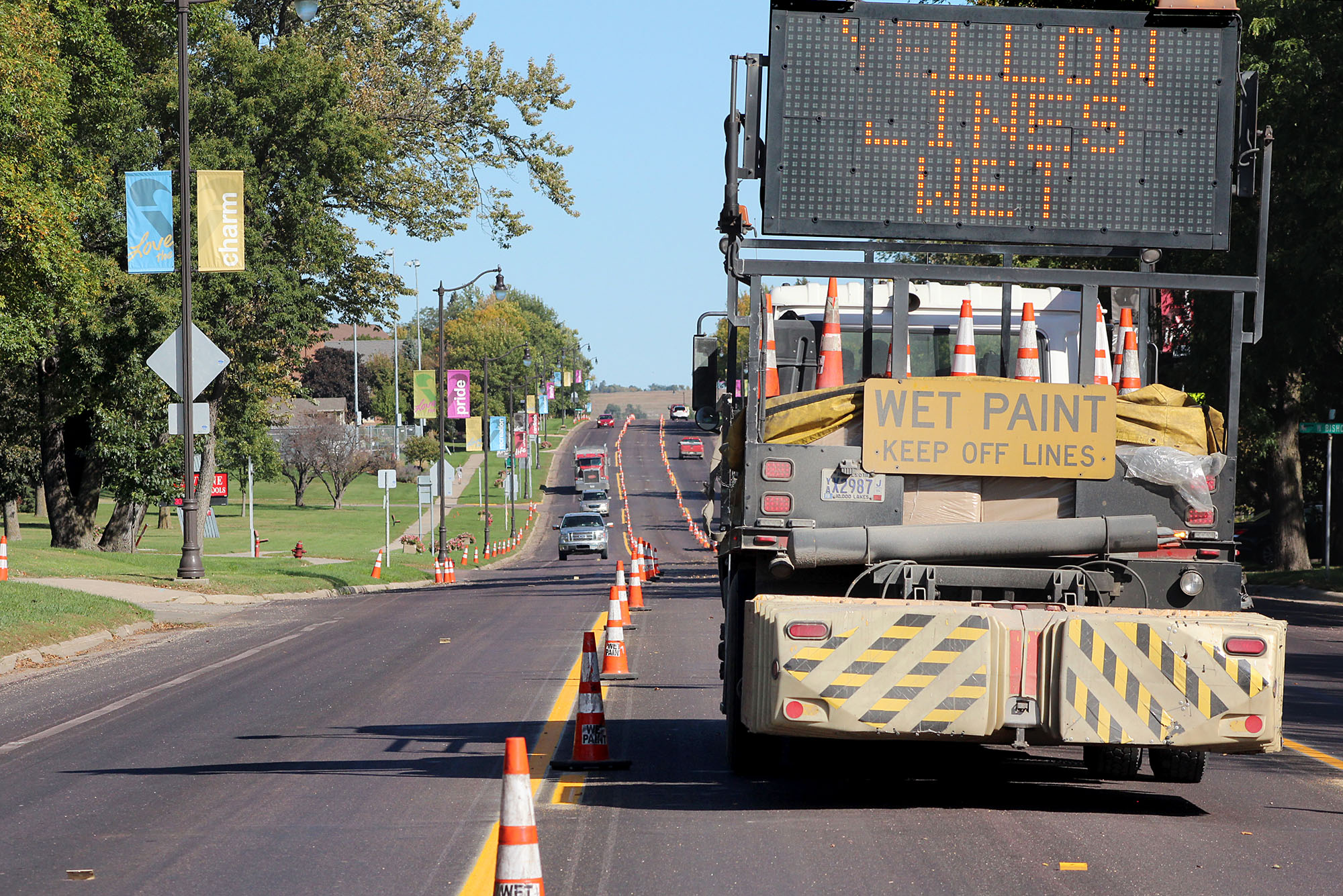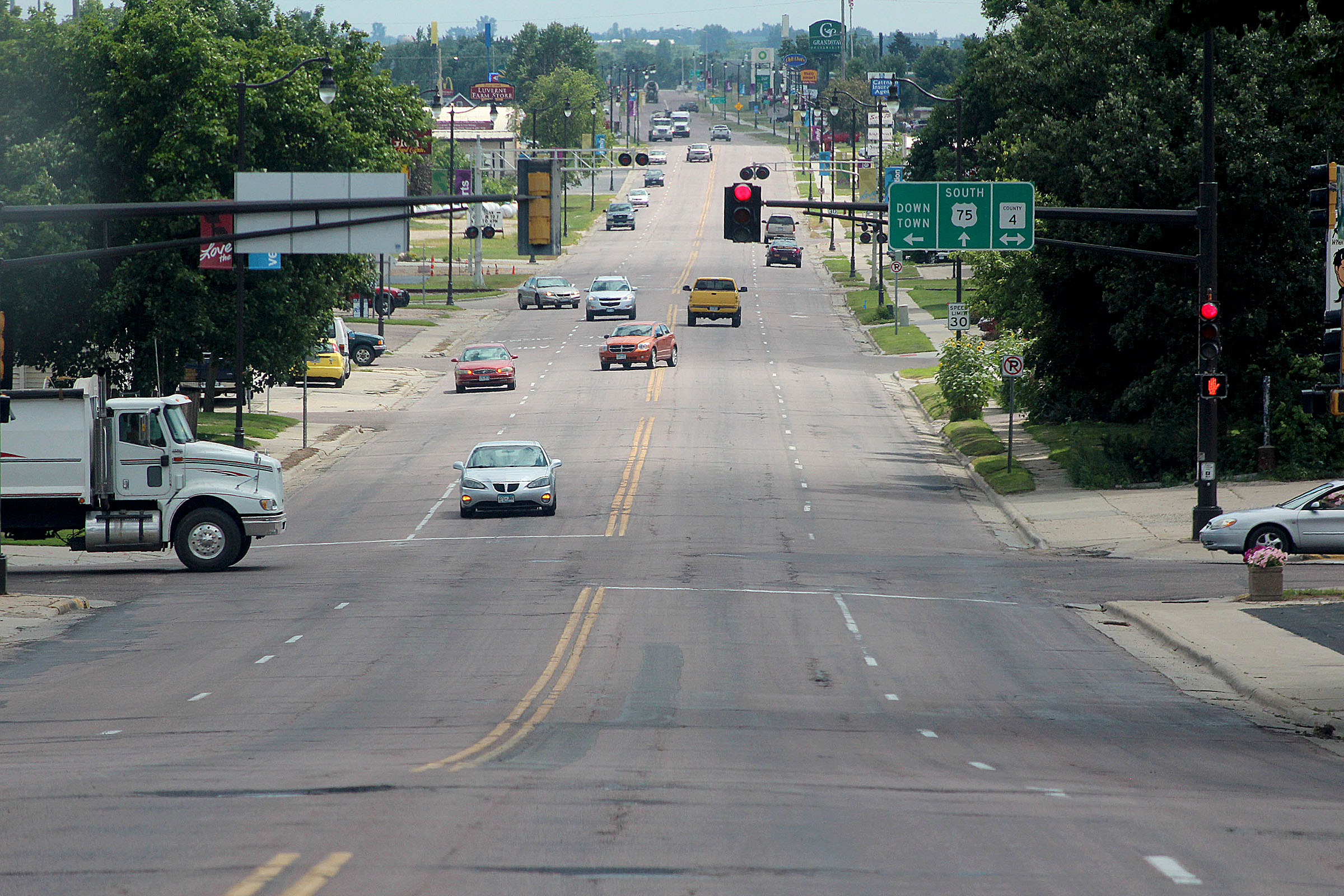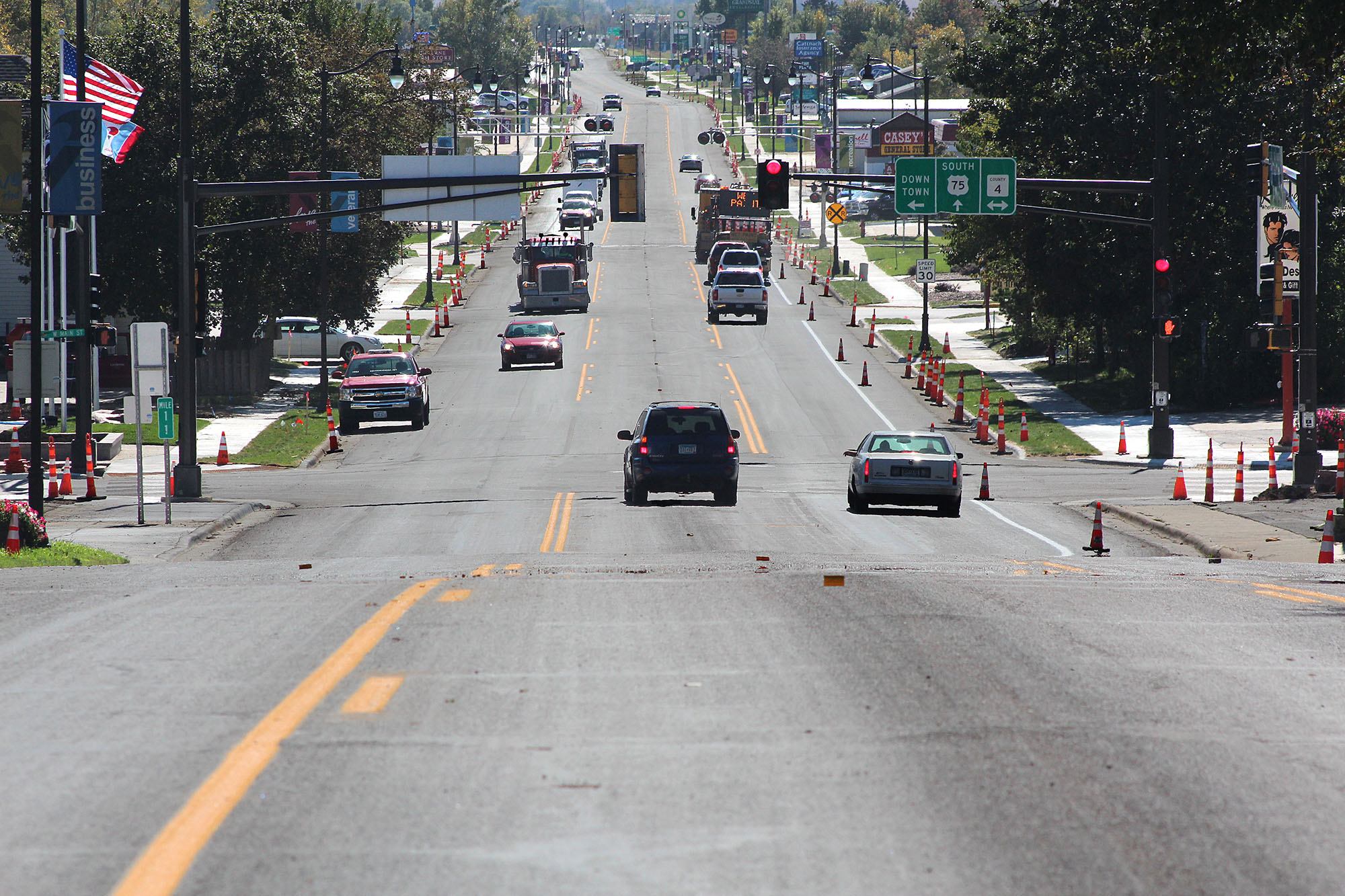 ,
,  ,
, 
Motorists on Highway 75 in Luverne are adjusting to three lanes instead of four since the new system was striped last week.
The new lanes, which are in effect for the full two-mile stretch through Luverne, accommodate one lane of traffic from each direction with a wide turn lane in the middle.
Though it’s long been a subject of controversy among local residents and businesses, Sheriff Evan Verbrugge said the first week of the new system has been uneventful.
“We haven’t had any incidents,” Verbrugge said. “Most of the confusion was during construction; the problem hasn’t been the driving lanes.”
He said older drivers have said it’s easier for them to navigate left turns, but Verbrugge said the system is designed to be safer for everyone.
“It’s easier to cross two paths than four,” he said, pointing out that this is especially true for pedestrians.
In fact the three lane discussion in Luverne was born out of concern for students safely crossing Highway 75 near the school campus.
In 2012 plans were in place for a pedestrian tunnel under Highway 75 until costs for that project nearly doubled and planners questioned whether pedestrians would all use one crossing location anyway.
In addition to pedestrian flashing lights, the Minnesota Department of Transportation recommended streamlining vehicles into two lanes.
At the time, state engineers met with resistance from local drivers who said they’d be bottle-necked behind slow traffic and have long waits to enter Highway 75 at intersections.
They pointed out there will still be the same number of vehicles on the highway, but the number of crashes will be reduced.
From 2003 to 2012, there were 88 crashes on South Highway 75 in Luverne.
Of those, the majority have been rear-end type collisions caused by a motorist stopping in a lane to negotiate a turn when traffic approaching from the rear doesn’t notice the vehicle is stopped.
Other common crashes are sideswipe crashes, which typically occur when motorists make lane changes to avoid a turning car in front them — only to hit a car that’s in the lane they’re moving into.
“A driver needs to quickly change lanes to accommodate an unanticipated turn,” said MNDOT engineer Scott Thompson at a March 2013 meeting in Luverne.
“They’re trying to judge four lanes of traffic, and they’re misjudging the gap.”
Given the previous crash history on South Highway 75 in Luverne, Thompson said the three-lane setup could mean 28 fewer crashes over the next 10 years, or three fewer crashes per year.
On North Highway 75, where there were 66 crashes in the past 10 years, the three-lane configuration could mean 21 fewer crashes, or two per year in the next 10 years.
“Studies show a significant reduction in crashes, by 30 percent and in some instances as high as 60 to 80 percent,” Thompson said.
He said there’s a “traffic calming” effect when lanes change from four to three.
“It changes the traffic environment in that motorists tend to slow down in respect to what feels like a narrower roadway,” Thompson said. “It’s still 48 feet.”
Given the recent discussion on social media, public opinion of the three lanes is still negative, many complaining of slower travel times.
Verbrugge however, pointed out that all this is likely more perception than reality.
“Luverne’s only two miles by two miles; how long can it take,” he said Monday.


